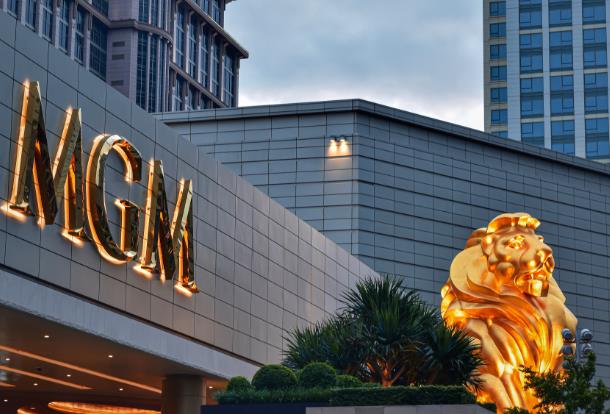ChinaTravelNews - Hotel organizations today need to handle a gamut of distribution channels that can pave way for bookings. The route to optimising distribution involves several key aspects such as connectivity (configuring transport types for each connection), making the most of brand.com channel, customizing cache services for dynamic hotel data etc. Hotels need to be spot on with their hotel rate data and inventory positions on various sales channels.
For Ted Zhang, CEO, DerbySoft, an experienced professional in this domain, Chinese hotel organizations need to evolve, and keep pace with evolving distribution platforms and channels.

Ted Zhang at 2015 China Hotel Marketing Conference
“If customers are willingly buying via WeChat or group buying platforms, hotels need to cater to it. But if we compare the way international hotel entities approach their connectivity with their counterparts in China, Chinese players need to open their data to their partners – the new apps, bucketing platforms like Google, TripAdvisor etc. Hotels here need to reconsider the way the availability, rate and/or inventory (ARI) is to be distributed. Till this isn’t done hotels would end up missing out on revenue opportunity,” says Zhang. His Shanghai-based company is currently enabling and processing about 3,000,000 room night reservations every month.
Zhang says Hotel organizations need to consider several aspects in order to optimize their overall distribution technology initiative. “Connection (integrating a distribution system and a hotel reservation system to facilitate transaction and deliver reservations), caching (quick delivery of hotel data to partners), content (not only ARI but also static (say hotel description), semi-static (such as cancellation policy) and dynamic content), computing (computing power for handling data) and control (being in command of data, just not PMS-oriented work) are key to excel. The world of distribution is dynamic, so hotels need to be spontaneous in their decision-making. And if the system isn’t easy to connect, then the problem would remain.”
Key considerations
There are several aspects that hotels need to focus on, according to Zhang.
Single image inventory: Even though the question of how availability, rate and/or inventory (ARI) is to be distributed always needs to be answered, Zhang says it is vital to work on single image inventory. “Hotels need to plan for single image data in their CRS. There is a definite need for synchronizing the data in an effective manner. No system or technology can guarantee 100% accuracy due to technology limitation. But with 5% ARI error rate, hotels can believe their functioning is satisfactory. Hotels need to gear up for an apt system to connect, and should learn how to outsource for connectivity. Working and managing all third party channels by self is out of question,” he adds.
“PMS must be able to integrate with CRS. Also, there is also a need to work out new generation content system that not only manages ARI, but also all sort of static data, semi-static data and dynamic data,” said Zhang.
Managing a variety of systems: Hotels are facing issues when it comes handling a diverse set of systems such as PMS, CRS, GDS etc. for their daily operations. There are diverse systems that feature in hotels, with uniformity being an issue considering interfaces and platforms. This needs to be sorted out to ensure that inventory is available to the entire network in real time (single image inventory). Zhang says more than data connectivity, more than 50% of engineering powers goes in handling the operating environment. “Data logging and monitoring is where a lot of effort and resources goes in,” he says.
Capitalize on traffic generation: The entry of Kayak and the strategic alliance between Skyscanner and Youbibi.com along with Qunar means that the meta-search space is getting intense. With increasing competition, hotels need to make sure their infrastructure doesn’t struggle while coping up with shopping query volumes. There is a need to look at a smart cache algorithm and solution to buffer the CRS from shopping query load, with milliseconds response time and huge reduction of the traffic load to the CRS. According to DerbySoft, in Marriott’s case the team reduced the traffic load by 84% while simultaneously reducing the response time by 67%.
XML integration: The industry needs to look at two-way XML integration for real-time ARI updates and receive bookings generated directly into their PMS. The goal should be to streamline all connections, and gear up for proficient rate distribution and rate optimization.
Analysis: Hotels shouldn’t only restrict themselves to real-time exchange of data with indirect channels or refining their channel management tools to manage various online distribution channels. Rather they should also look at precise click reports and conversion rates analysis to be in command of the sort of return on investment they are garnering. They should evaluate online sales analysis reports as well as how the market behaviour in real-time for a better decision-making.
Two-way data transfer is offering better access to OTAs especially to deliver automated channel solutions. It is being said that OTA+PMS+ big data is a new framework that major OTA players are trying to have more control over hotel distribution. But Zhang doesn’t believe that it will have a major impact “One or two PMSs cannot control or have a strong say. Open Platform to connect into any channels should be the way to go forward, and hotel data belongs to hotels. Maybe some PMS can steal data and use it. But it’s not going to be that easy as no hotel would let do it,” he said.
Hotels need to go for automation, and cut down on administration work. Advantages of single image inventory and maximising the potential sales on all available channels in real-time should be the main focus. Other than revenue generation, the effort should also be on efficiency especially in terms of giving comfort to customers ensuring parity across all platforms. (Report by Ritesh Gupta)




